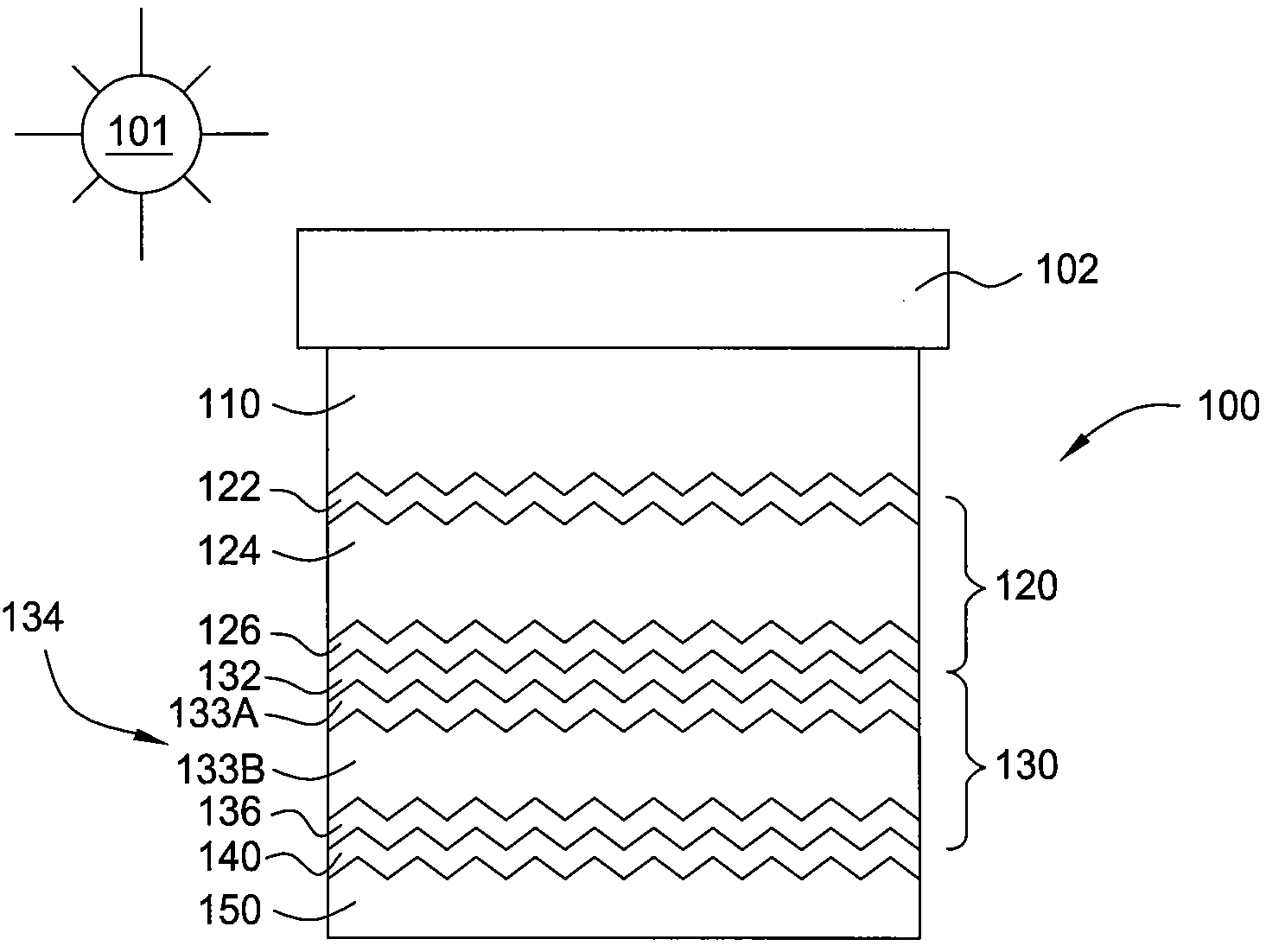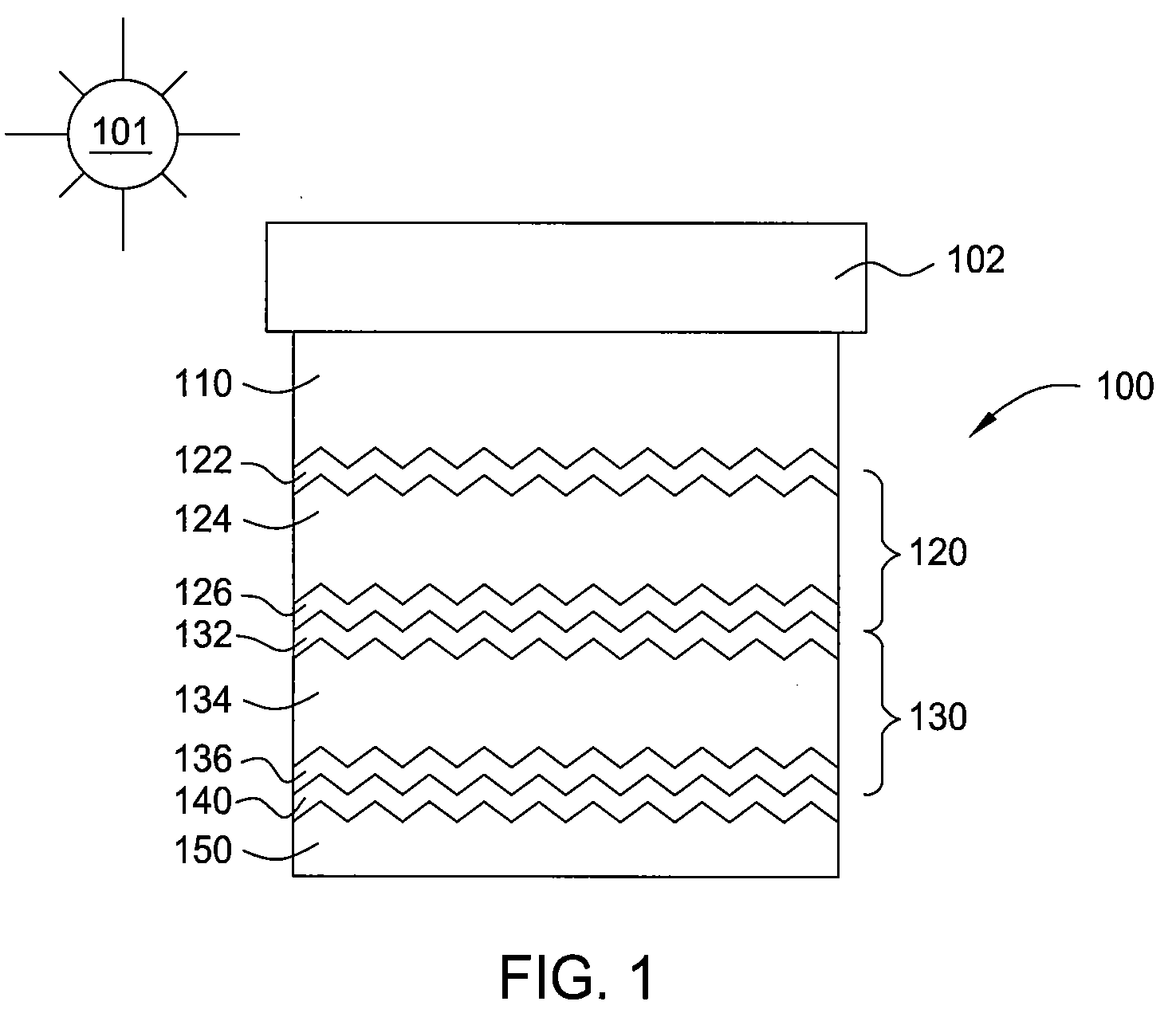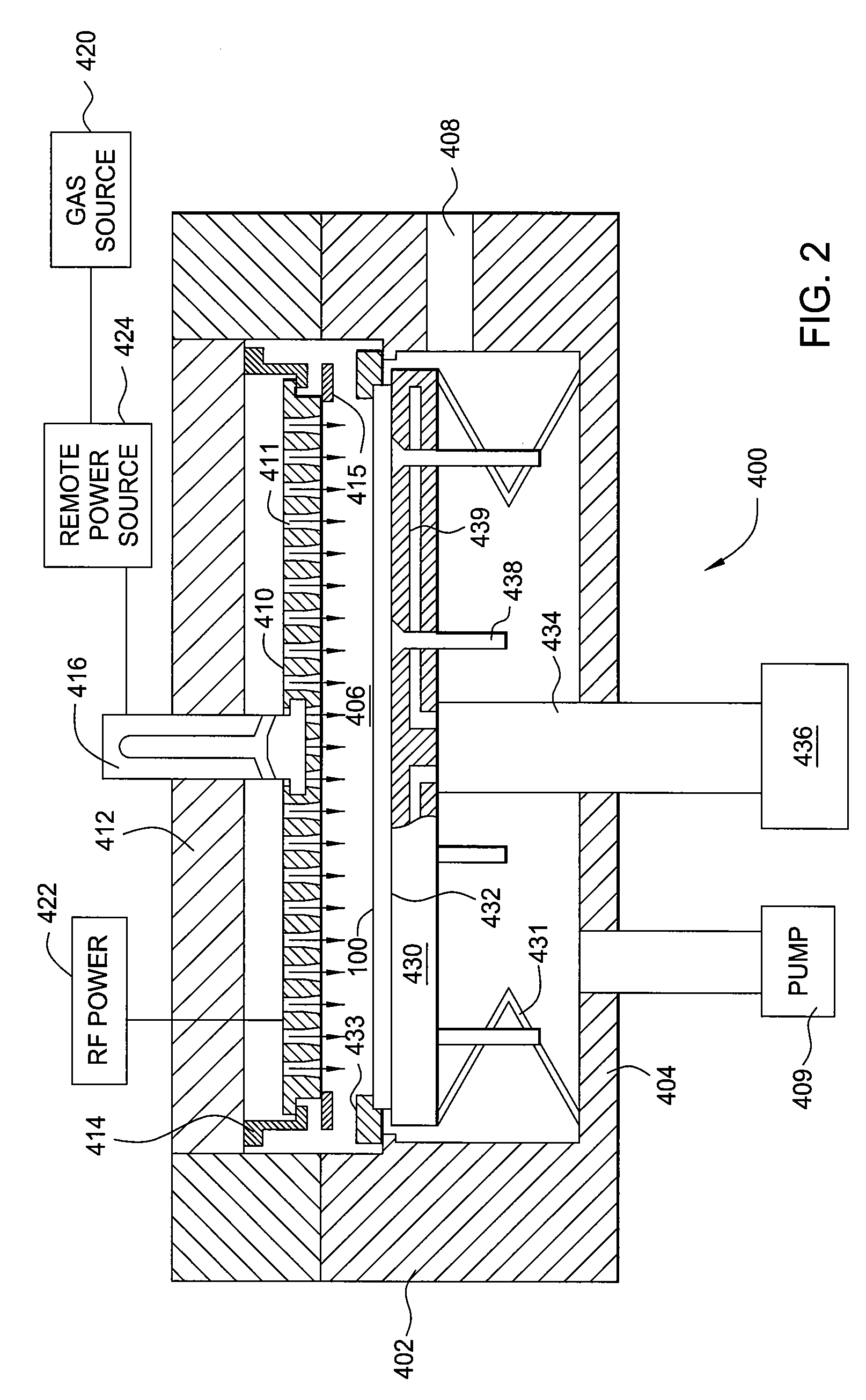Intrinsic amorphous silicon layer
a silicon layer and amorphous silicon technology, applied in the field can solve the problems of low efficiency, high cost, and low efficiency of thin film solar cells
- Summary
- Abstract
- Description
- Claims
- Application Information
AI Technical Summary
Benefits of technology
Problems solved by technology
Method used
Image
Examples
Embodiment Construction
[0018]Embodiments of the present invention include improved thin film solar cells and methods and apparatus for forming the same. For ease and clarity of description, the present invention will be described in reference to the tandem junction solar cell of FIG. 1, although, the present invention may be used to advantage to form other single junction, tandem junction, or multi-junction solar cells.
[0019]FIG. 1 is a schematic diagram of a multi-junction solar cell 100 oriented toward the light or solar radiation 101. Solar cell 100 comprises a substrate 102, such as a glass substrate, polymer substrate, or other suitable transparent substrate, with thin films formed thereover. The solar cell 100 further comprises a first transparent conducting oxide (TCO) layer 110 formed over the substrate 102, a first p-i-n junction 120 formed over the first TCO layer 110, a second p-i-n junction 130 formed over the first p-i-n junction 120, a second TCO layer 140 formed over the second p-i-n juncti...
PUM
| Property | Measurement | Unit |
|---|---|---|
| frequency | aaaaa | aaaaa |
| frequency | aaaaa | aaaaa |
| frequency | aaaaa | aaaaa |
Abstract
Description
Claims
Application Information
 Login to View More
Login to View More - R&D
- Intellectual Property
- Life Sciences
- Materials
- Tech Scout
- Unparalleled Data Quality
- Higher Quality Content
- 60% Fewer Hallucinations
Browse by: Latest US Patents, China's latest patents, Technical Efficacy Thesaurus, Application Domain, Technology Topic, Popular Technical Reports.
© 2025 PatSnap. All rights reserved.Legal|Privacy policy|Modern Slavery Act Transparency Statement|Sitemap|About US| Contact US: help@patsnap.com



